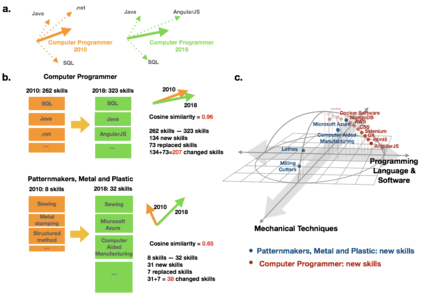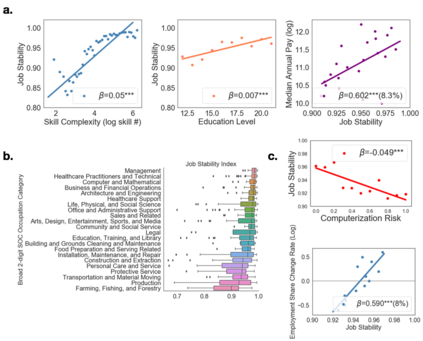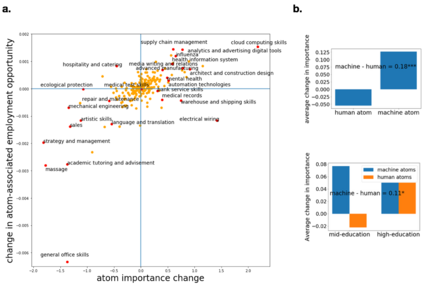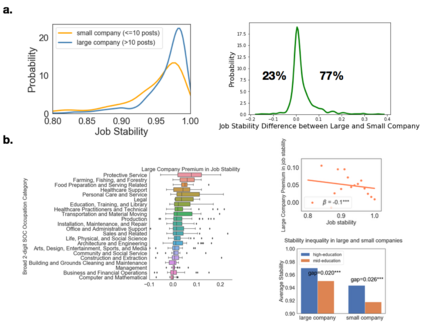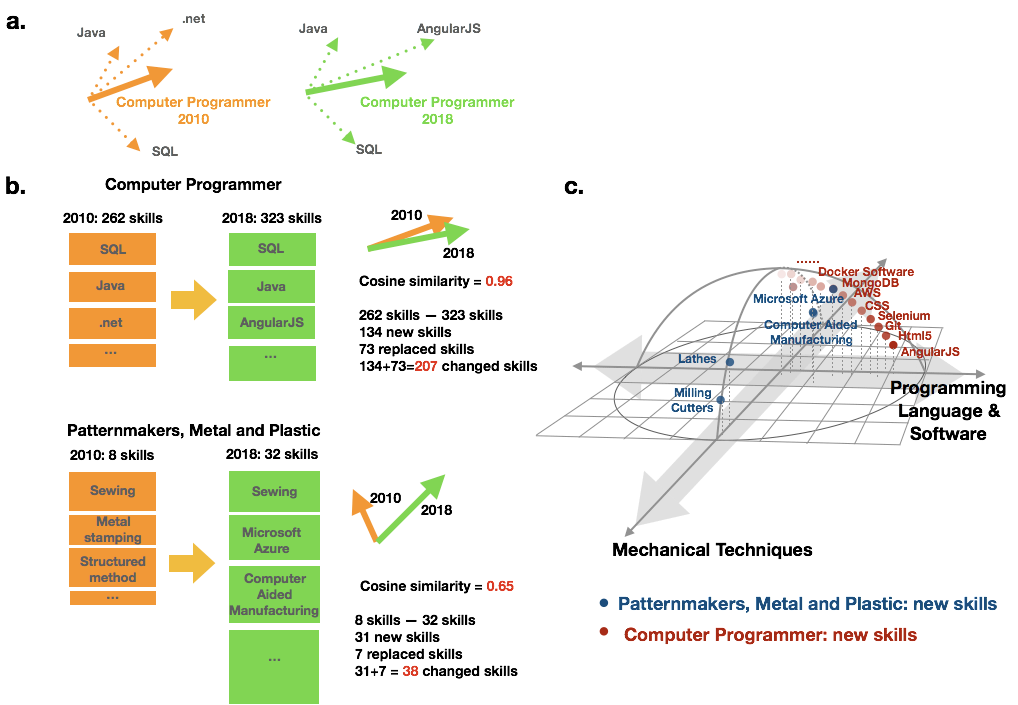While substantial scholarship has focused on estimating the susceptibility of jobs to automation, little has examined how job contents evolve in the information age despite the fact that new technologies typically substitute for specific job tasks, shifting job skills rather than eliminating whole jobs. Here we explore the process and consequences of changes in occupational skill contents and characterize occupations subject to the most re-skilling pressure. Recent research suggests that high-skilled STEM and technology-intensive business occupations have experienced the highest rates of skill content change. Using a dataset covering the near universe of U.S. online job postings between 2010 and 2018, we find that when the number and similarity of skills within a job are taken into account, the re-skilling pressure is much higher for workers in low complexity, low education and low compensation occupations. We use high-dimensional embeddings of skills estimated across all jobs to precisely assess skill similarity, and characterize occupational skill transformations, demonstrating that skills requiring machine-operation and interface rise sharply in importance in the past decade, much more than human interface skills in low and mid-education occupations. We establish that large organizations buffer jobs from skill instability and obsolescence, especially low-skilled jobs with unstable skill requirements. Finally, the gap in re-skilling pressure between low/mid-education and high-education occupations is smaller in large organizations, suggesting that by controlling the surrounding skill environment, such organizations reduce the rate of required re-skilling and sustain short-term productivity for those occupations.
翻译:虽然大量奖学金侧重于估算自动化工作的脆弱性,但很少研究信息时代的工作内容是如何演变的,尽管新技术通常替代具体的工作任务,改变工作技能,而不是消除整个工作。我们在这里探讨职业技能内容变化的过程和后果,并分析受最再培训压力影响的职业特点。最近的研究表明,高技能STEM和技术密集型商业职业经历了技能内容变化率最高的情况。我们利用涵盖2010年至2018年美国近乎世界范围的在线职位分配的数据集,发现在考虑某一职位中技能的数量和相似性时,信息时代的工作内容是如何演变的。我们发现,对低复杂性、低教育和低报酬职业的工人来说,再技能压力要高得多。我们使用高水平的技能在所有岗位上高水平地嵌入估计的技能,以准确评估技能相似性,并描述职业技能转变的特点,表明过去十年需要机械操作和接口的技能的重要性急剧提高,在低和中级教育职业中,比人际互动技能更甚。我们发现,大型组织由于技能不稳定和过时,特别是低技能职业的升级压力和低技能水平职业,因此在高技能水平的组织的大规模职业中需要。

